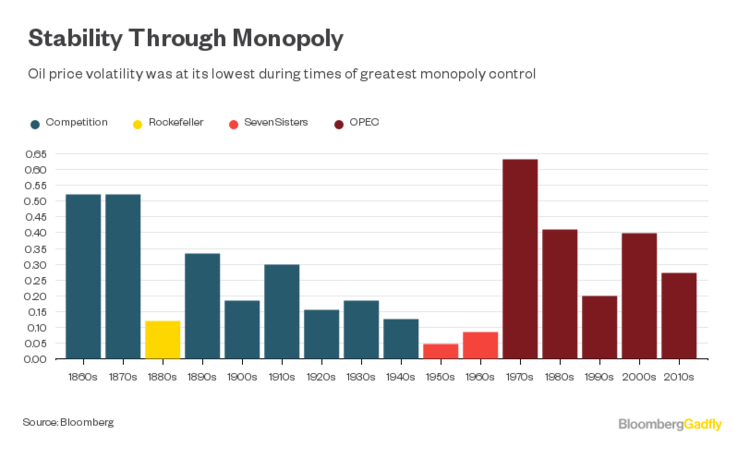
Venezuelan President Nicolas Maduro, along with Iran, has called for an OPEC summit early next year to “establish a new mechanism in setting oil prices.” He gave no clue what that mechanism might be, although he did observe that oil producers do all the work, while someone else sets the price and makes the profits.
It is clear that, as in the past, what Venezuela really wants is higher oil prices. OPEC’s recent agreement to cut supply has helped to lift them a bit, but they are still far from where Maduro would like to see them, or where they need to be for Venezuela to balance its budget.
Throughout most of its 56-year history the group has sought the elusive goal of stable oil prices — generally at a level somewhat above that existing at the time and well above the cost of production for most of its members. Its track record has not been good.
OPEC has two possible mechanisms for stabilizing the market. It can fix the price at which its members sell their oil, letting supply fluctuate, or it can fix the volume sold, letting the price settle where it will. It cannot set both at the same time.
OPEC has tried both; neither has worked for any length of time.
From the 1970s until the mid-1980s OPEC set official selling prices for its crudes. Oil companies were willing to pay the set rates because they’d lost control of their supplies when their operations in key OPEC countries were nationalized, so the system worked reasonably well at first.
This strategy came under increasing pressure in the early 1980s as contracting demand and rising non-OPEC supply squeezed demand for OPEC oil, leading members to offer discounts to official prices. It broke down entirely when Saudi Arabia, frustrated at the cheating, introduced the concept of “netback pricing” — basing the price of its crude on the value of the products produced from it.
When it became apparent that fixing prices didn’t work, OPEC opted for the system of output quotas it’s trying to revive today. But cheating has been a persistent problem here too. By the mid-1990s even OPEC members found it difficult to believe the official numbers submitted by some of their fellows, and the group began to publish external estimates of its members’ production — the so-called “secondary source” figures.
It is no coincidence that the periods when oil price volatility was lowest were when the industry, from wellhead to petrol pump, was concentrated in a few hands — whether Rockefeller’s Standard Oil Trust in the late 19th century, or the group of integrated oil companies known as the Seven Sisters that dominated the industry in the 1950s and ’60s.
OPEC does not have the level of control over the industry needed to return to that kind of price stability. So what could Maduro propose as a new mechanism?
Oil inventories in consumer countries, which help smooth out mismatches between physical supply and demand, and the forward and futures markets, which often send the earliest signals of impending problems, evolved to deal with shortage and glut. So he might suggest letting the market do its job — but that seems unlikely.
Another idea might be to base OPEC quotas on exports, rather than production. This could be monitored much more effectively through bills of lading and ship tracking, either by OPEC itself, or some external body.
However, the biggest problem that OPEC has may not be in controlling the actions of its members at all, but rather in anticipating how much of its oil the world will need. The long lead times in getting oil from the Middle East to major markets and turning it into the required products means that the group has to forecast the demand for its oil at least six months ahead — no easy task, particularly if U.S. shale oil production makes non-OPEC supply more flexible than in the past.
If it cannot do that, then no amount of trying to control supply will bring price stability.
Recommended for you
